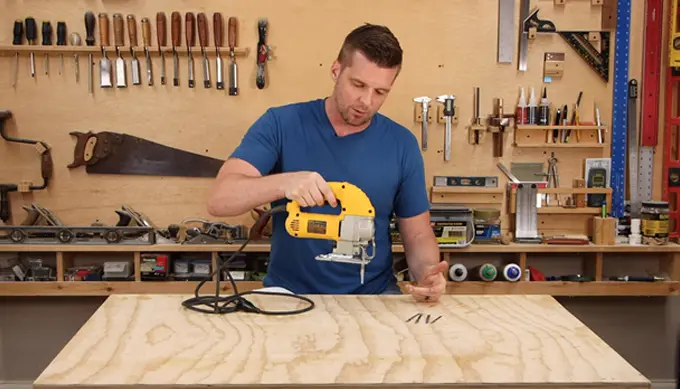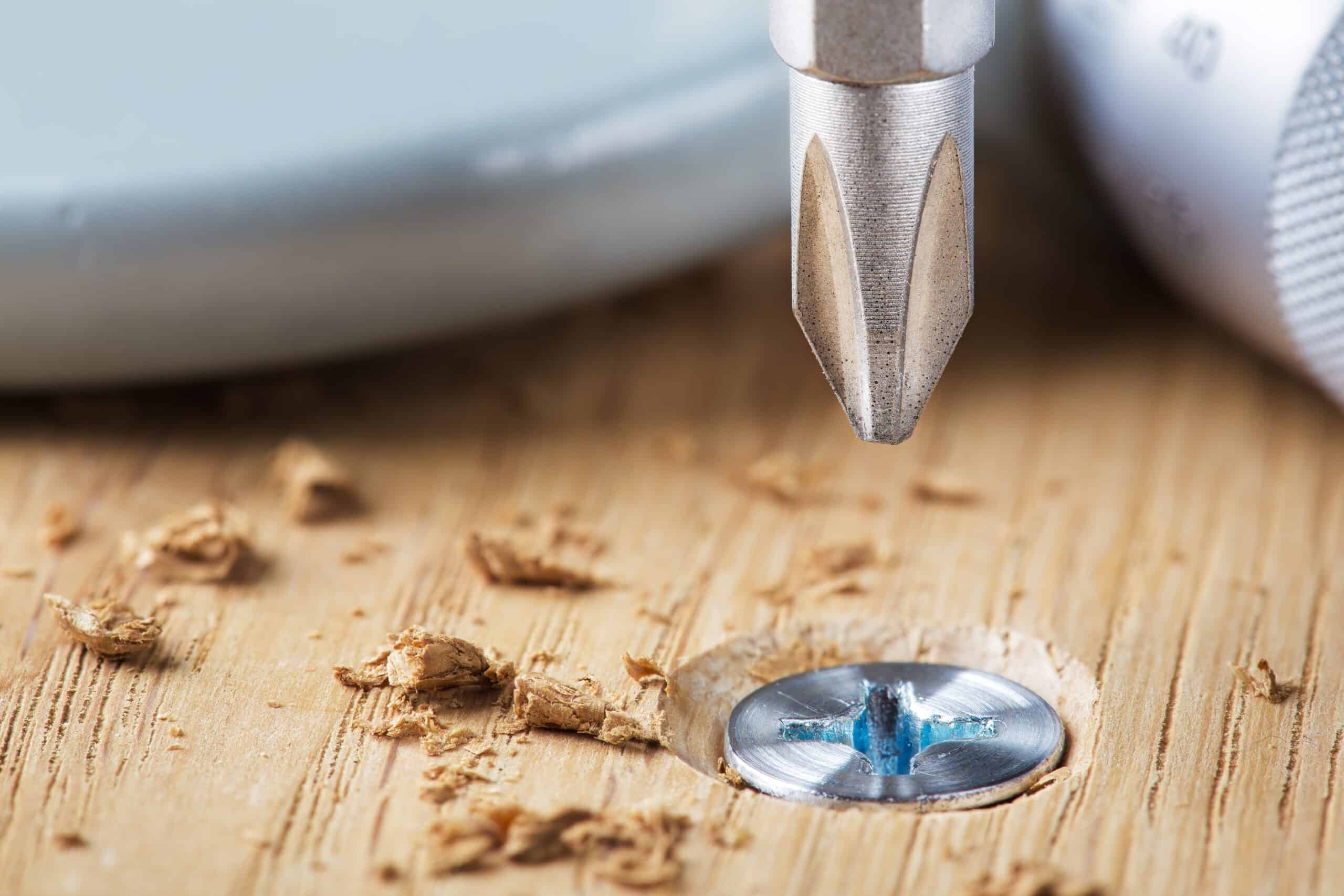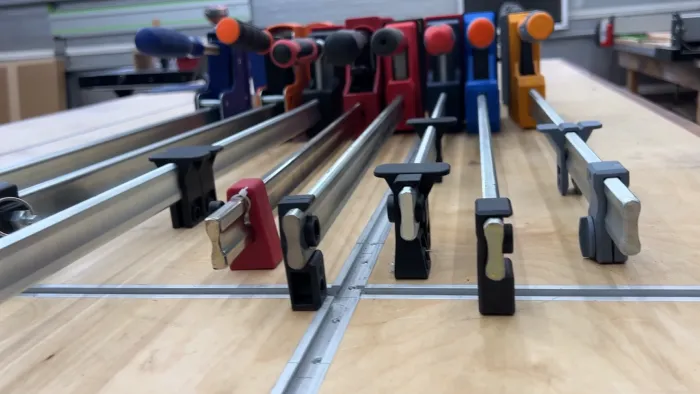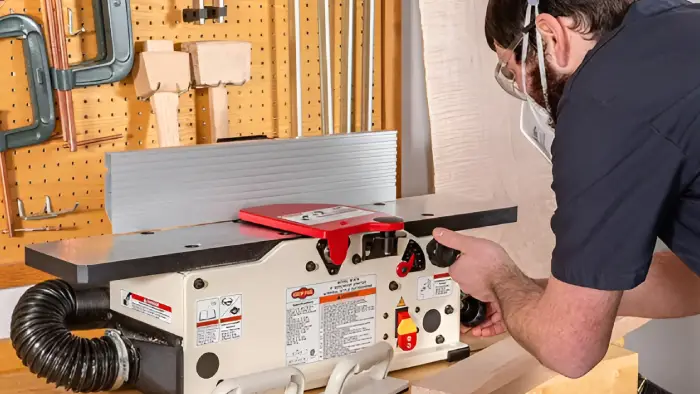WoodenuKnow.com is a participant in the Amazon Services LLC Associates Program, an affiliate advertising program designed to provide a means for sites to earn advertising fees by advertising and linking to Amazon.com and may earn from qualifying purchases.
Any experienced woodworker will tell you that one of the most frustrating things that can happen while working on a project is when your jigsaw blade starts to bend. Not only does this mean that your cuts will be less precise, but it can also cause the blade to break completely.
A jigsaw blade is a type of saw blade that is used to cut curved or irregular shapes in wood, metal, or other materials. These blades are typically made of high-carbon steel or tungsten carbide and are very sharp in order to make clean, precise cuts.
So why do jigsaw blades bend in the first place? This article aims to help you prevent blade bends in the future and some of the most common reasons why blades bend.
Why Do Jigsaw Blades Bend : Reasons
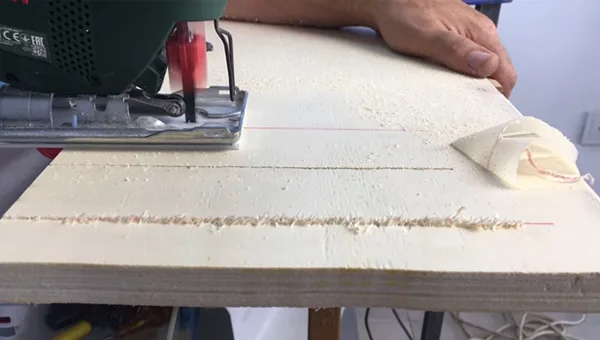
Several factors can cause a jigsaw blade to bend. These are discussed in the following paragraphs.
Blunt or Dull Blades
Jig saw blades bend for a number of reasons, but the most common cause is due to blunt or dull blades. When blades become dull, they can no longer cut through the material as effectively, which puts extra stress on the blade.
This additional strain can cause the blade to bend or break. In addition, dull blades are more likely to wander off course, which can also lead to bending and breakage.
Incorrect Tension
Another common reason for jigsaw blades to bend is incorrect tension. If the blade is too loose, it can flex and eventually break. On the other hand, if the blade is too tight, it can also break or bend.
Therefore, it is important to make sure that the blade has the correct tension before beginning a cut. Incorrect tension is often the result of using the wrong size blade for the material being cut.
Improper Use of the Blades
jigsaw blades can also bend or break if they are used improperly. For example, using too much pressure when cutting can put stress on the blade and cause it to snap.
Trying to make curves or turns that are too tight can also cause bending or breaking. So, it is important to use only moderate pressure when cutting and make sure that curves and turns are done with care.
Blade Type Mismatch
As anyone who has ever used a jigsaw can attest, blades are a critical part of the tool. Jigsaw blades come in a variety of sizes and shapes, each designed for a specific purpose.
Many people make the mistake of using the wrong type of blade for their project, which can lead to problems such as bent blades. There are a few reasons why this happens.
- Using a blade that is too small for the material can put unnecessary strain on the tool, causing the blade to bend.
- Second, using a blade that is too big for the material can also cause problems. The blade can get stuck in the material, resulting in excess friction and heat that can cause the blade to warp.
By taking the time to choose the right jigsaw blade for the job, you can help avoid bent blades and other problems.
The Struggle With Steep Curves
One problem that we often face while using a jigsaw is that the blade tends to bend while trying to cut a steep curve. This can be extremely frustrating, as it makes it much harder to get a clean cut. There are actually several reasons why this happens.
- The blade of the jigsaw is not rigid enough to withstand the pressure of cutting through a curve.
- The teeth of the blade are not designed to penetrate wood smoothly. As a result, they tend to catch on the wood and cause the blade to bend.
- The speed at which the blade is moving can also cause it to bend. If the blade is moving too slowly, it will create more friction and heat up, causing it to warp. If the blade is moving too quickly, it will vibrate and also cause bending.
In order to avoid this problem, it is important to use a jigsaw with a strong, rigid blade. Additionally, it is helpful to use a blade with wide teeth that are spaced apart.
Overly Thick Timber
When the blade is forced to cut through a thick piece of wood, it puts a lot of pressure on the blade, which can cause it to bend. To avoid such situations, you should check the thickness of the timber you’re using; if it’s too thick, you may need to switch to a thinner piece. You should also regularly sharpen your blades to ensure they stay sharp and don’t start to bend.
Taking The Jigsaw to its Limits
There are many reasons why the jigsaw may bend when pushed to its limits.
- The most common cause is that the metal is not strong enough to resist the force being applied. This can be due to a number of factors, including manufacturing defects or damage from an accident.
- Another reason for bending is that the mechanism that locks the jigsaw in place is not strong enough. This can be caused by a variety of factors, including dirt and debris build-up, wear and tear, or damage.
- Finally, it is also possible for the jigsaw to bend if it is overloaded with projects. This can happen if the user tries to cut through multiple layers of material at once or if the jigsaw is used for extended periods of time without taking a break.
Weak Blade Guides
The blade of the jigsaw is mounted in a guide that can be adjusted to control the depth and angle of the cut. Over time, the guides that control the blade can become worn, causing the blade to bend as it cuts.
This can result in inaccurate cuts and an uneven finish. In some cases, the blades may even become jammed in the guide, making it difficult to remove them. Replacing the guides is typically a quick and easy fix that will restore the accuracy of your cuts.
Using the Orbital Setting
The use of the orbital setting is one of the main reasons for the bending of the jigsaw. When using this setting, the blade moves in a small circle as it cuts through the material. This can cause the blade to bend slightly as it tries to follow the circular motion.
As a result, the cut may not be as clean as it would be if the jigsaw blade was moving in a straight line to provide a straight cut. In addition, the orbital setting produces more friction, which can also cause the blade to bend.
How to Avoid Bending of the Blade?
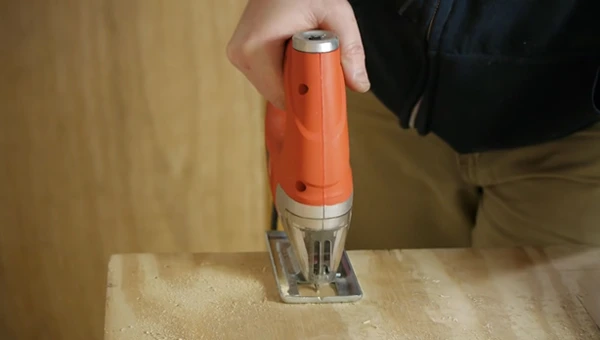
Bending of the jigsaw blade is a common problem that can be easily avoided with a few simple tips.
- Make sure that the blade is correctly installed in the saw. A jigsaw should be adequately secured to the workbench. A loose saw can easily be knocked off-kilter, causing the blade to bend.
- Use a sharp blade for cutting. A dull blade is more likely to catch on the material and bend.
- Apply even pressure when cutting. If you press too hard, the blade is more likely to bend.
- Use a guide when cutting curved or intricate shapes. A guide will help keep the blade on track, preventing it from veering off course and becoming bent.
- Be aware of the type of material you are cutting. You have to make sure the material you’re cutting is supported. If it’s not, the blade is more likely to bend when you reach the end of the cut.
- Use clamps to secure the workpiece.
- Take your time when cutting. Rush jobs are more likely to result in a bent blade than taking your time and being precise.
By following these simple tips, you can avoid bending the jigsaw blade.
FAQs:
Do All Jigsaw Blades Bend?
Depending on the type of jigsaw blade you are using, they all have the potential to bend. The three main types of jigsaw blades are those that are designed for use with wood, metal, or porcelain. Each one is made from a different material and has a different hardness level.
As a result, they all have different levels of resistance to bending. For example, blades designed for wood use are usually made from softer metals such as carbon steel. This makes them more likely to bend when cutting through hardwoods.
In contrast, blades that are designed for use with metal are typically made from harder materials such as stainless steel or tungsten carbide. As a result, they are less likely to bend when cutting through thicker metals.
Finally, blades for porcelain are usually made from diamond-coated carbon steel. This makes them extremely hard and resistant to bending. In summary, all jigsaw blades have the potential to bend, but the likelihood depends on the type of blade and the material it is made from.
What are the Consequences of Using a Bent Jigsaw Blade?
One of the problems with bent jigsaw blades is that they can cause the saw to bind. This can happen when the blade is not inserted all the way into the saw’s shoe or when the kerf, or cut, width is too narrow for the blade.
When the saw binds, it can stop abruptly, which can cause the blade to break. In addition, a binding saw can be difficult to control and can cause kickback. Kickback occurs when the blade catches on the material being cut and is suddenly hurled back towards the user.
This can be dangerous and is one of the leading causes of jigsaw accidents. As a result, it is important to use a straight blade in order to avoid binding and kickback.
What Should I Do if I Accidentally Bend a Jigsaw Blade?
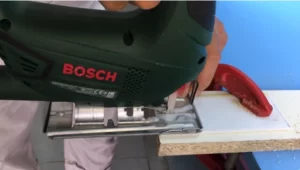
If you accidentally bend a jigsaw blade, the best thing to do is to stop using it and replace it with a new one. Trying to continue using a bent blade will not only make your cuts less accurate, but it can also damage your saw.
If you don’t have a replacement blade handy, you can try to straighten the blade with a hammer. Nevertheless, this is not recommended, as it can cause the blade to break and further damage it. It’s always best to err on the side of caution and use a new blade when possible.
Will a Bent Jigsaw Blade Ruin My Project?
No, a bent jigsaw blade will not ruin your project. While it can make straight cuts more difficult, it may also cause the blade to break more easily. If you notice that your blade is starting to bend, it’s best to replace it with a new one. This will help ensure that your cuts are accurate and that your blade lasts as long as possible.
Conclusion:
Hopefully, by now, you should have a proper understanding of the question, “why do jigsaw blades bend?”. These blades are designed to bend when they encounter resistance. This helps to prevent the blade from breaking and keeps the cut surface smooth. If the blade is not properly tensioned, the saw may vibrate and produce an inaccurate cut.
It is also possible to be injured by a saw that kicks back due to a bent blade. For these reasons, it is important to ensure that the blade is properly tensioned before use. By taking these precautions, you can help to ensure that your jigsaw produces smooth, accurate cuts.

